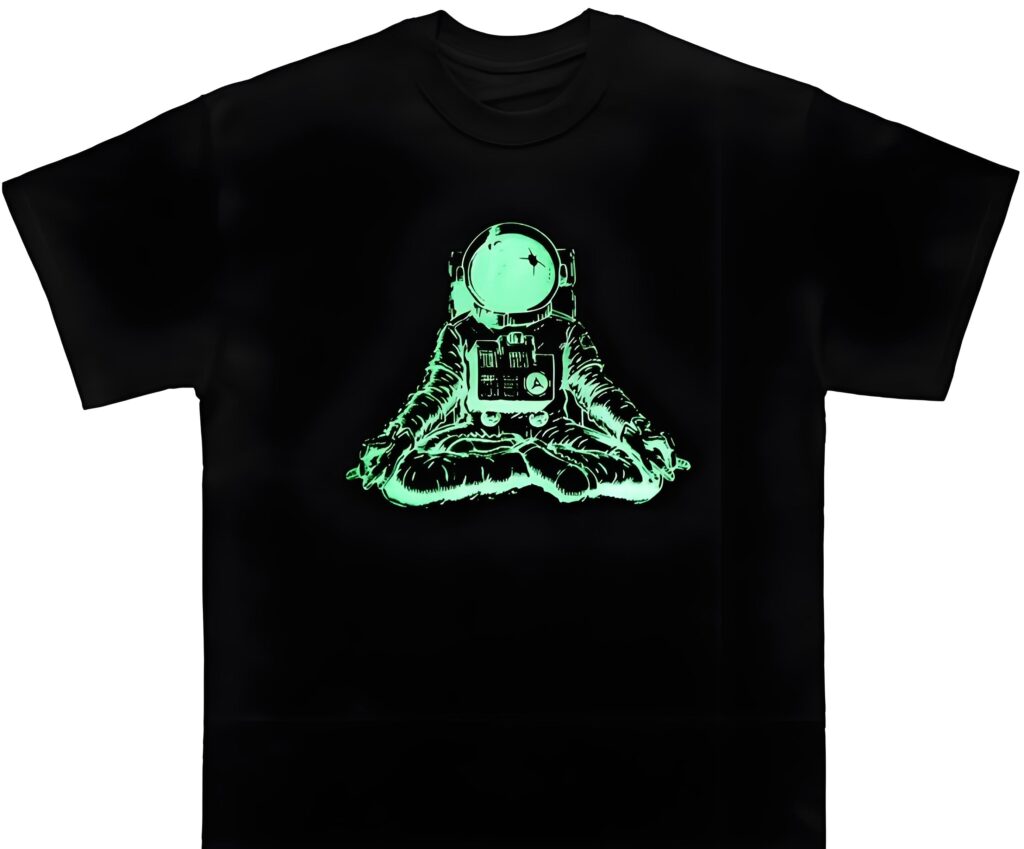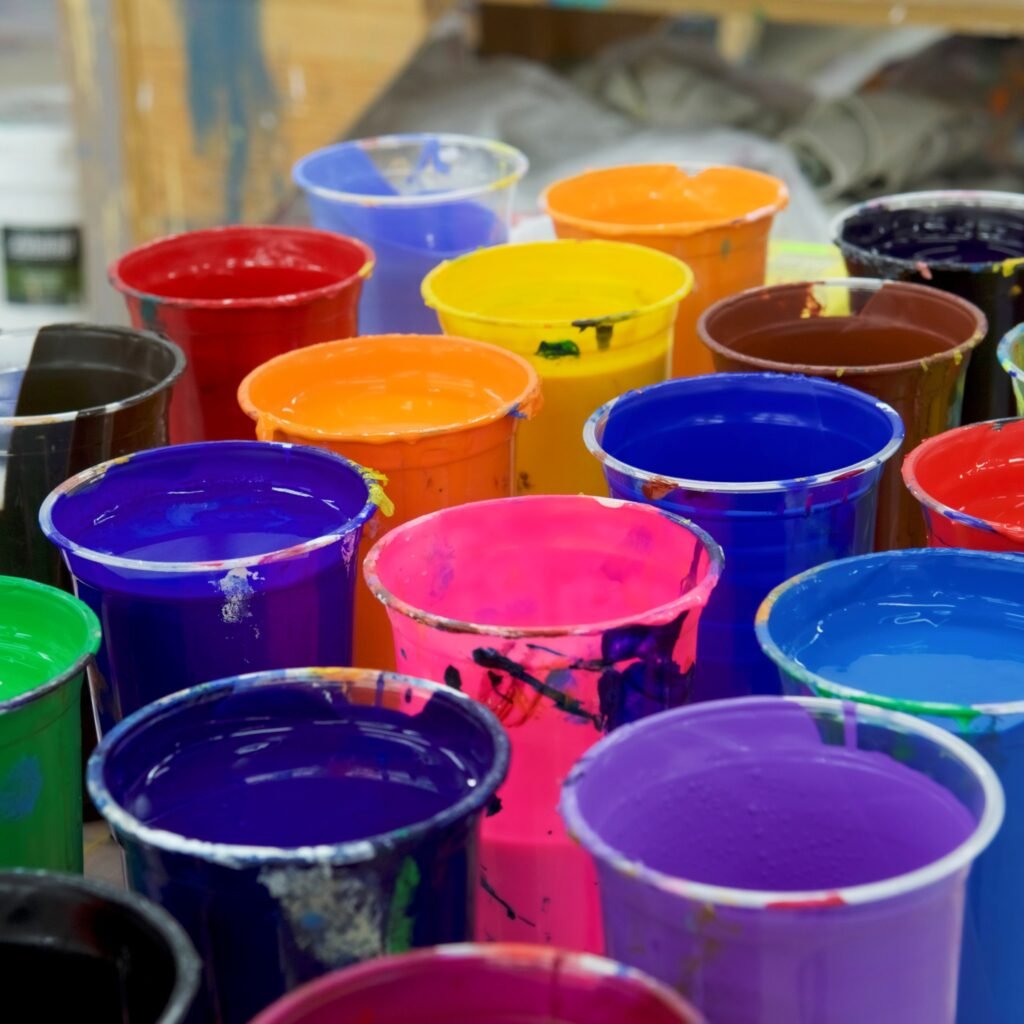Зробіть крок у світ, де колір не просто видимий — він вібрує, виблискує та електризує! У динамічній сфері шовкотрафаретного друку флуоресцентні пластизольні чорнила перетворюють ваші відбитки на привабливі вирази, що виділяються з-поміж інших та залишають тривале враження. Незалежно від того, чи друкуєте ви для сміху, комерційного проекту чи енергійної інноваційної виразності, оволодіння використанням флуоресцентних пластизольних чорнил підсилює вашу дизайнерську творчість. Цей посібник обов'язковий для ознайомлення як початківцям, так і досвідченим друкарям дисплеїв, розкриваючи досвідчені техніки, ключові речовини та всі секрети вражаючих неонових принтів, які вражають вашу цільову аудиторію. Ви дізнаєтесь, що робить флуоресцентні пластизольні чорнила особливими, як найкраще нанести друк на будь-який одяг та як уникнути не надто рідкісних помилок, переконавшись, що кожен відбиток такий же яскравий на футболці, як і для вашої уяви. Давайте збільшимо яскравість та поринемо!
Структура статті
- Що таке пластизольні чорнила та чому вони необхідні в трафаретному друці?
- Розвінчуємо міфи про пластизол: що входить до складу і чому це важливо?
- Що робить флуоресцентні кольори такими електризуючими у друці?
- Як отримати найкращий друк за допомогою флуоресцентних пластизольних чорнил?
- Отримання приголомшливого флуоресцентного жовтого кольору: поради та хитрощі
- Зухвалість з флуоресцентним рожевим: як зробити його яскравим
- Неонові проти традиційних: чому такий ажіотаж навколо цих яскравих кольорів?
- Прямий друк флуоресцентними чорнилами: коли і чому?
- Базові шари, підбазова основа та непрозорі білі кольори: ключ до яскравості
- Чорнило Triangle Plastisol: преміальна продуктивність для серйозних друкарів
1. Що таке пластизольні чорнила та чому вони необхідні в трафаретному друці?
Пластизольні фарби – це найкращий вибір для друкарень, що спеціалізуються на трафаретному друкарстві, цінуються за свою універсальність, надійність та простоту використання.1 По суті, пластизоль являє собою суспензію частинок ПВХ у рідкому пластифікаторі, що утворює кремоподібну консистенцію, з якою легко працювати як на автоматичних, так і на ручних трафаретних друкарських машинах. Кінцевий результат? Рівномірні, барвисті та довговічні відбитки, які добре прилипають до різних тканин, від бавовни до поліестеру.
На відміну від чорнил на водній основі, пластизольні чорнила не висихають на сітці, що дає друкарям дисплеїв більше робочого часу та менше витрат матеріалу. Це робить їх чудовими для великих виробничих тиражів — ваш екран не засмічується, а зареєстроване зображення залишається чітким від першого до останнього друку. Якщо ви шукаєте високоякісну, високонепрозору обробку для свого одягу, пластизоль — це ідеальний варіант для забезпечення міцності та довговічності.
2. Розвінчуємо міфи про пластизоль: що входить до складу суміші та чому це важливо?
Розуміння складу пластизолю є основоположним для отримання першокласних результатів у вашій наступній виробничій серії.1 Виготовлений з ПВХ-смол, пластифікаторів та сильних добавок, він розроблений для плавного розподілу та чудового покриття. Багато сучасних чорнил не містять фталатів, що надає пріоритет захисту навколишнього середовища без шкоди для продуктивності.
Ваш вибір пластизольних фарб для трафаретного друку залежить не стільки від кольору, скільки від непрозорості, кремоподібної консистенції, того, наскільки добре вони спалахують, а також від варіантів обробки при низьких температурах. Забули згадати форму основи або щільність вашого одягу? Ви також можете виявити, що ваш друк виглядає чудово на білих светрах, але погано виглядає на темнішому одязі. Завжди перевіряйте інформацію про виробника, особливо для спеціалізованих серій, таких як важкі або швидкотвердіючі пластизоли.
3. Що робить флуоресцентні кольори такими електризуючими у друці?
Флуоресцентні чорнила – це диво під правильним освітленням – вони буквально світяться під ультрафіолетовим та чорним світлом, створюючи візуальний ефект, який не поступається власним неоновим дивам природи.2 У сфері дисплейного друку флуоресцентні кольори, такі як флуоресцентний жовтий, фіолетовий та малиновий, виготовляються з надзвичайно блискучими пігментами для максимальної яскравості.
Ці унікальні чорнила використовують набагато ширший колірний спектр, а це означає, що ваше зображення виділятиметься на одязі навіть за «звичайного» денного світла. Хочете, щоб ваш дизайн затьмарив конкурентів на заході або під освітленням для вечірок? Флуоресцентні пластизольні чорнила – це секретна зброя. Крім того, завдяки нашаруванню з непрозорою білою основою, вони забезпечують яскравість навіть на найтемнішому одязі з бавовни та поліестеру.
4. Як отримати найкращий друк за допомогою Флуоресцентні пластизольні чорнила?
Щоб отримати цю культову яскравість флуоресцентних пластизольних чорнил, потрібні певні знання та правильні матеріали для трафаретного друку. Основи починаються з щільності сітки; для більшості флуоресцентних чорнил середня або низька щільність сітки (110-156 tpi) забезпечує достатнє нанесення для насиченого покриття. Завжди поєднуйте друк із відповідною підкладкою — біла ідеально підходить для підвищення яскравості та непрозорості, особливо на темному матеріалі.
Флуоресцентні пластизольні чорнила люблять кремоподібну, гладку консистенцію. Завжди ретельно перемішуйте чорнила для трафаретного друку, особливо після транспортування в холодних або теплих умовах, щоб відновити належну текучість. Чорнила розроблені таким чином, щоб залишатися робочими за кімнатної температури, але можуть загуснути, якщо їх зберігати протягом тривалого часу або за низької кімнатної температури.

5. Досягнення вражаючих результатів Флуоресцентні жовті пластизольні чорнилаПоради та хитрощі
Флуоресцентний жовтий колір – це головний колір будь-якої неонової палітри – колір, який одночасно сяючий і вимогливий. Щоб максимізувати його яскравість, почніть з яскраво-білої основи для створення непрозорості, потім додайте один або два шари флуоресцентного жовтого зверху. Для максимального ефекту використовуйте техніку сильного розведення та мінімізуйте сліди від сітки для чистого, гладкого покриття.
Ретельне затвердіння також є життєво важливим. Як і всі пластизольні фарби для трафаретного друку, флуоресцентний жовтий колір повинен досягти потрібної температури (зазвичай близько 160°C) для належного склеювання та довговічності при пранні. Недостатнє затвердіння може призвести до тьмяного відбитка, який потріскається; надмірне затвердіння може призвести до випалу кольору або спалення матеріалу. Завжди перевіряйте затвердіння відбитків, розтягуючи та злегка подряпавши одяг.

6. Зухвалість з флуоресцентним рожевим: як зробити його яскравим
Флуоресцентний рожевий колір привертає увагу, як мало які інші кольори — ідеально підходить для сміливого брендингу, динамічних ілюстрацій або ретро-стилю. Нанесіть його поверх білої основи, щоб максимально збільшити непрозорість та яскравість, а також розгляньте можливість використання прямої основи, якщо друкуєте на світлішому одязі.12
Для створення спеціальних ефектів спробуйте поєднати флуоресцентний рожевий з іншими флуоресцентними кольорами для класичних відбитків у стилі 80-х. Будьте готові налаштувати налаштування трафарету: деякі дизайни можуть потребувати додаткових проходів або швидкого затвердіння між шарами, щоб запобігти сильному накопиченню чорнила та забезпечити гладку, кремову текстуру готового відбитка. Добре виконане флуоресцентно-рожеве зображення збереже цей преміальний «яскравий» вигляд навіть після багаторазового прання.
7. Неонові кольори проти традиційних: чому такий ажіотаж навколо цих яскравих кольорів?
Неонові та флуоресцентні чорнила призначені не лише для вечірок чи жилетів безпеки — вони є популярним товаром на сучасних ринках вуличного одягу, спорту та рекламних товарів. Традиційні кольори пластизолю покривають основні елементи, але додайте трохи неону, і ваші принти раптово привернуть увагу та інвестиції. Неонові чорнила створюють не просто колір, а настрій, енергію та навіть ностальгію за естетикою 80-х і 90-х.
Крім того, флуоресцентні відтінки, такі як жовтий, рожевий та червоний, чудово справляються з умовами слабкого освітлення та ультрафіолетового випромінювання, що робить їх ідеальними для нічних перегонів, заходів або створення яскравої продукції. Хоча традиційні та неонові чорнила використовують однаковий хімічний склад пластизолю, саме кількість та тип пігменту роблять флуоресцентні кольори блискучими. Змішування неонових чорнил зі звичайними чорнилами вимагає обережності — завжди дотримуйтесь співвідношення пігментів для забезпечення непрозорості.
8. Прямий друк за допомогою Флуоресцентні пластизольні чорнилаКоли і чому?
Прямий трафаретний друк флуоресцентним пластизолем є найкращим варіантом для більшості виробів, але успіх залежить від вибору матеріалу та чорнила.2 Для прямого друку на темному почніть з білої або непрозорої основи, щоб забезпечити повний блиск флуоресцентного друку. На світліших виробах ви можете використовувати пряме нанесення флуоресцентного чорнила для м’якшого друку та швидшого виробництва.
Завжди оцінюйте тип матеріалу — бавовна 100% забезпечує чудову адгезію до пластизолю, тоді як суміші (наприклад, з поліестером) можуть вимагати пластизольних фарб з низьким рівнем розтікання або спеціальних серій.1 Правильна сітка, ракель та швидкість — все це частина рівняння для професійного друку.
9. Базові шари, підоснова та непрозорі білі кольори: ключ до яскравості
Підоснова – це маловідомий герой, коли справа доходить до трафаретного друку флуоресцентними фарбами. Нанесення білої підоснови є важливим для максимальної передачі кольору, особливо на темному одязі або светрах.12 Непрозора підоснова діє як прожектор, відбиваючи колір назад через шар флуоресцентної фарби для неперевершеної яскравості.
Хочеться зекономити на основі, щоб пришвидшити виробництво, але не піддавайтеся спокусі. Міцна, непрозора основа забезпечує рівномірне покриття та усуває тьмяні, каламутні результати. Для багатошарових, багатокольорових відбитків завжди використовуйте блимаючу полімеризацію між шарами, щоб запобігти небажаному змішуванню чорнил та зберегти чітке, чисте зображення на вашому одязі.
10. Чорнило Triangle Plastisol: преміальна продуктивність для серйозних друкарів
Серйозно прагнете досягти найкращих результатів? Пластизольні чорнила Triangle – найкращий вибір для високоякісного професійного друку. Відомі своєю кремоподібною консистенцією та високою непрозорістю, ці чорнила забезпечують чудове покриття та довговічність навіть у важких виробничих умовах. Чорнила розроблені для легкого використання як на ручних, так і на автоматичних друкарських машинах – просто добре перемішайте та друкуйте.23
Серія флуоресцентних пластизольних чорнил Triangle представлена у всіх основних кольорах, включаючи флуоресцентний жовтий, рожевий та червоний. Якщо ви хочете розширити свою палітру або протестувати спеціальні ефекти, цей бренд користується довірою серед друкарів трафаретного друку завдяки своїй надійності, стабільності та сумісності з широким спектром витратних матеріалів для трафаретного друку.



